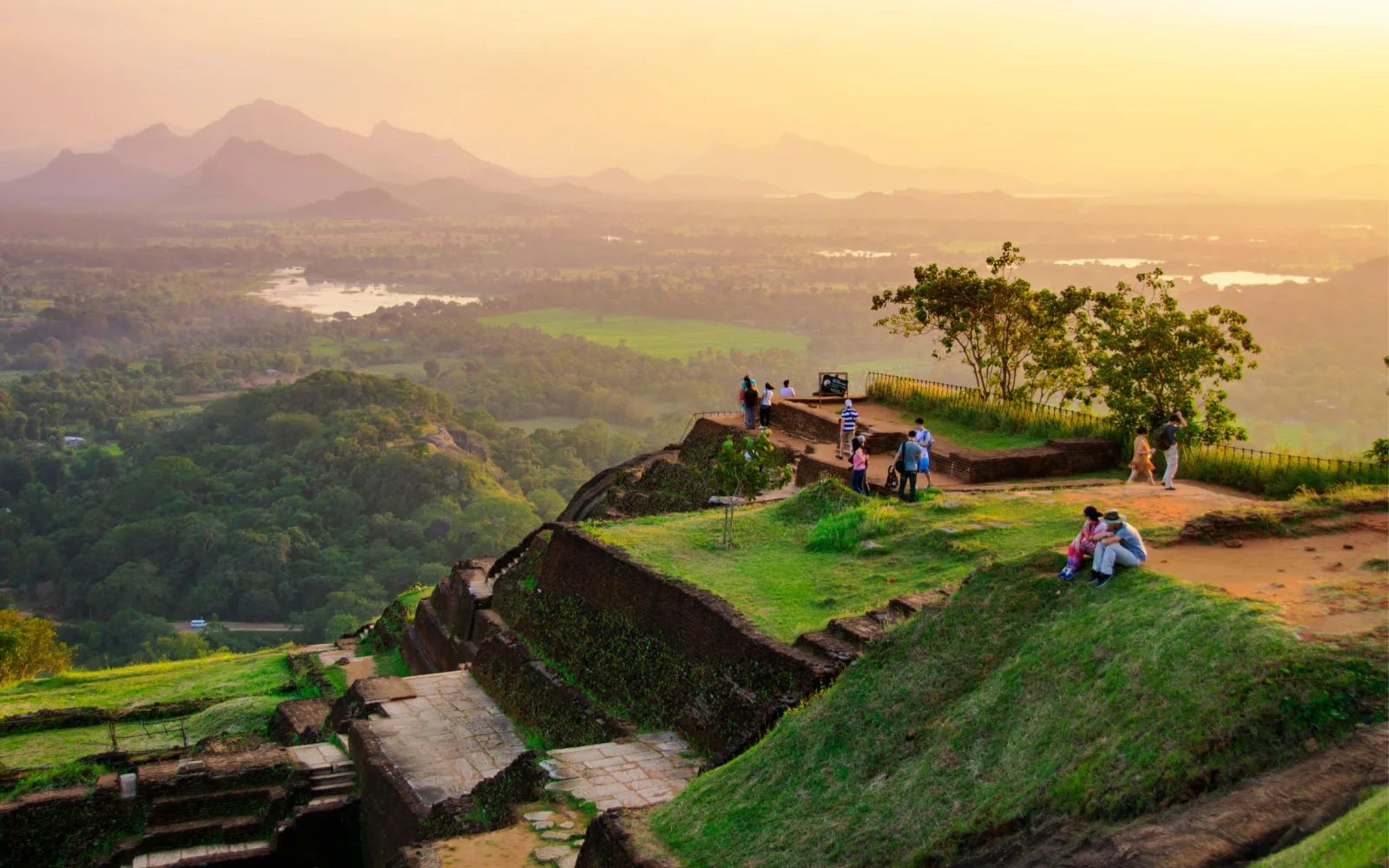What's the best time to visit Sri Lanka?
The best time to visit Sri Lanka falls between January and March, offering sunny skies and a festive atmosphere with fewer crowds in February. This period is perfect for exploring beaches, tea plantations, and temples amid vibrant Buddhist and Hindu festivals. Enjoy the island’s beauty and cultural richness with optimal weather and slightly lower accommodation costs in February.
The island of Sri Lanka is a magical destination where beaches meet rolling hills and mountains, exotic tea gardens overlook the coast, and Buddhist pagodas delight travelers with their domed stupas.
From experiencing a slower pace of life in the paradise of pristine beaches, jungles, and highlands to trying delectable local cuisine like curries and rice, so much wonder and adventure await you in Sri Lanka if you can time your visit just right.
Let’s take a look at the overall best, cheapest, and least busy times to visit along with the worst time to go.
The Overall Best Time to Visit Sri Lanka
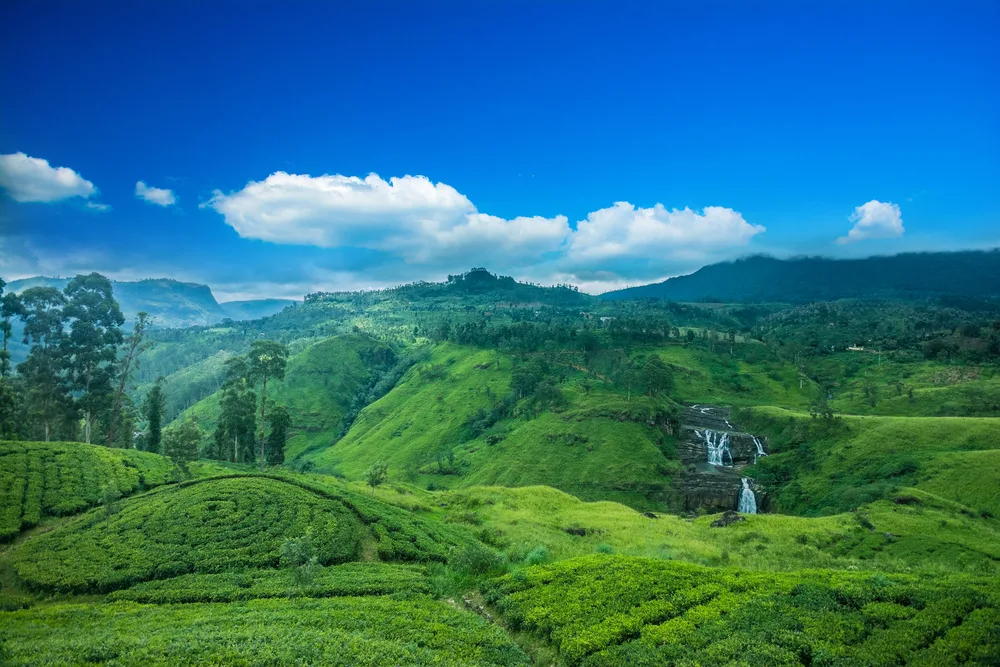
Shutterlk/Shutterstock
The best time to visit Sri Lanka is during the dry season between January and March for warm, sunny weather with minimal rain, lots of festivals, and chances to explore beaches, tea plantations, and temples.
Sri Lanka’s seasonal weather extremes make the dry period from January to March stand out with its milder temperatures and reduced rainfall. It’s the prime time to sit on one of the island’s sandy beaches, follow temple trails, attend a Buddhist or Hindi festival, or tour a tea plantation.
The weather in Sri Lanka is close to idyllic between January and March, with fewer rainy days than the bookend dry season months of December and April.
- January: 65-88°F; 6-9 rainy days
- February: 65-89°F; 4-6 rainy days
- March: 67-93°F; 6-10 rainy days
This is the perfect time to hop on a tuk tuk for a temple trail tour of the Colombo countryside, explore Colombo’s bustling historic district, shops, and seaside promenade, or relax on Tangalle’s secluded beaches and visit the old Dutch fort overlooking the ocean.
Go ahead and book a tour of a tea plantation or stay onsite in a bungalow during this period. Thanks to the highland locations of Sri Lanka’s plantations, you’ll enjoy slightly cooler air and perfect conditions to tour the farms and sample their teas.
As far as hotel prices go, January, February, and March are the most expensive months to visit Sri Lanka. But February is a surprisingly affordable time to fly to the island with airfare starting around $893 (March is one of the most expensive months for Sri Lanka airfare, starting around $1,209).
You will pay more per night to stay during the best time of year, but the overall prices are still very affordable and budget-friendly during the high season. Here’s what we uncovered when taking a look at Google Hotels pricing data (2-5 star properties) by the month in Sri Lanka:
- January: $109/night
- February: $118/night
- March: $95/night
February’s blissful conditions with the fewest rainy days, mild-to-warm temperatures, and huge, colorful festivals make it a truly amazing time to visit Sri Lanka. But you’ll save a bit on accommodations if you plan for January or March instead.
Look forward to immersing yourself in Sri Lankan culture with Buddhist and Hindi festivals almost back-to-back during the dry season, including the following:
- Duruthu Poya Day (Jan.) is the annual commemoration of Buddha’s initial visit to the island after enlightenment, always occurring on the month’s full moon
- Pongal (Jan.) is a Thai 3-day festival celebrated by the Tamil community in Sri Lanka that wraps up the winter solstice with traditional pongal (sweetened rice and lentils with spices and coconut milk) and decorated homes
- Sri Lanka National Day (Feb. 4) celebrates Sri Lanka’s independence from the British Empire with parades, live music and traditional dance performances, and processions around the island’s towns and cities
- Navam Perahera (Feb.) is a huge, colorful procession in Colombo with drummers, flag bearers, and dancers in the streets leading to Gangaramaya Temple for Buddhist rituals and prayers
- Maha Shivaratri Day (Feb./Mar.) is held in February or March annually to commemorate the Hindu god Shiva’s dance of creation with chanting, prayer vigils, and offerings of milk at local temples that are decorated for the occasion
Note that many of these festivals and holidays are dry poya, or full moon, celebrations with no alcohol served in restaurants, bars, or shops.
January, February, and March are our favorite times to visit Sri Lanka, and if you plan your visit anytime during these idyllic months, you’ll get to experience the best Sri Lanka has to offer from its coasts to the highlands.
Cheapest Time to Visit Sri Lanka
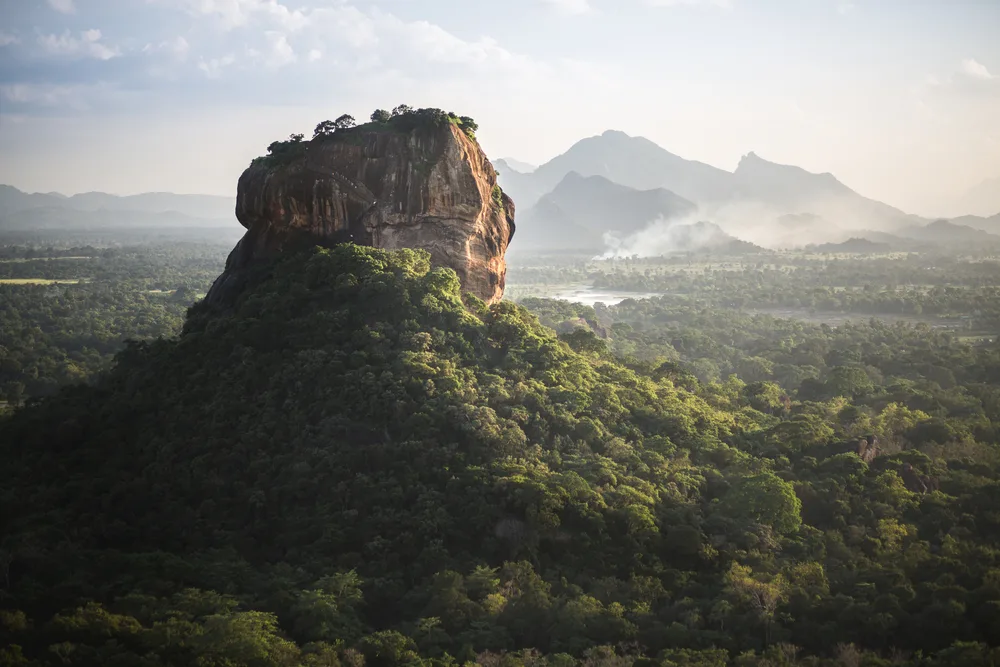
SylvainB/Shutterstock
The cheapest time to visit Sri Lanka is between May and July, when the Yala monsoon season’s arrival leads to rapidly declining tourist numbers and lower prices on accommodations and flights.
Prices on accommodations around Sri Lanka take a noticeable dip come May, right as the rainy monsoon conditions arrive and tourist numbers experience a steep drop-off. You won’t see hotel prices as cheap as May through July any other time of the year!
But this affordability comes at a price of sorts. Plan on there being anywhere from a measly 3 to as many as 16 rainy days each month during the Yala (May-August) monsoon in Sri Lanka:
- May: 72-91°F; 8-16 rainy days
- June: 72-93°F; 3-13 rainy days
- July: 71-92°F; 3-10 rainy days
While rainy conditions are definitely going to affect your visit and the plans you make, it doesn’t have to be a trip-killer. Anuradhapura and Batticaloa see much less rainfall during the Yala monsoon season, so these are good options to visit if you have to plan your trip during this wet period.
On the other hand, Colombo (the capital city) and the lush, ancient city of Kandy are much wetter areas and usually are on the higher end of the estimated number of rainy days.
Fortunately, the rains during the cheapest time to visit tend to be short-lived bursts that don’t last all day and are punctuated with brief sunny periods.
It’s a good time to visit Anuradhapura’s ancient Buddhist temples and sites, like Ruwanweli Maha Seya temple and the Ritigala Forest Monastery, check out Batticaloa’s Dutch fort and historic gate, or browse the Colombo National Museum and the covered Pettah Market for fresh food, jewelry, and souvenirs.
July and August are especially nice times to visit beaches on Sri Lanka’s eastern coast, like Trincomalee, Pasikudah, and Arugam Bay, and to see the annual elephant migration in Minneriya National Park before they move to Kaudulla National Park in September.
You’ll save a considerable amount on your hotel, tea plantation cottage, or beachfront bungalow when you visit Sri Lanka between May and July. Here’s what Google Hotels data for this period shows us about average nightly rates:
- May: $68/night
- June: $70/night
- July: $72/night
May and June are also two of the cheapest months to fly to Sri Lanka, with June being the cheapest month for airfare to Sri Lanka all year (flights start around $853 in June, according to Skyscanner).
Even with the increase in rainfall, the period from May to July is very active in Sri Lanka and filled with religious and cultural festivals you can attend when you visit. Here’s what happens annually this time of year:
- Vesak Poya (May) on May’s full moon is a Buddhist festival of lanterns and lights marking the observed day of Buddha’s birth and later, his enlightenment, with temple visits and offerings
- Poson Poya (Jun.) honors the arrival of Buddhism to the island by Mahinda, a monk, with an annual pilgrimage to the ancient capital of Anuradhapura
- Kataragama Festival (Jul.) is dedicated to Lord Skanda (the Hindu god of war) as people arrive at the Kataragama temple complex in south Sri Lanka to present offerings, practice fire walking and other religious rituals, and engage in processions
- Aadi Vel Festival (Jul.) in Colombo is dedicated to the Hindu god of war as thousands come to participate in processions and performances that honor the deity and carry ancient spears
With the chance to pay the lowest prices of the year for airfare and accommodations in Sri Lanka, May through July is undoubtedly a great time to visit if your budget is your top priority and a little rain won’t ruin your plans for the trip.
Least Busy Time to Visit Sri Lanka
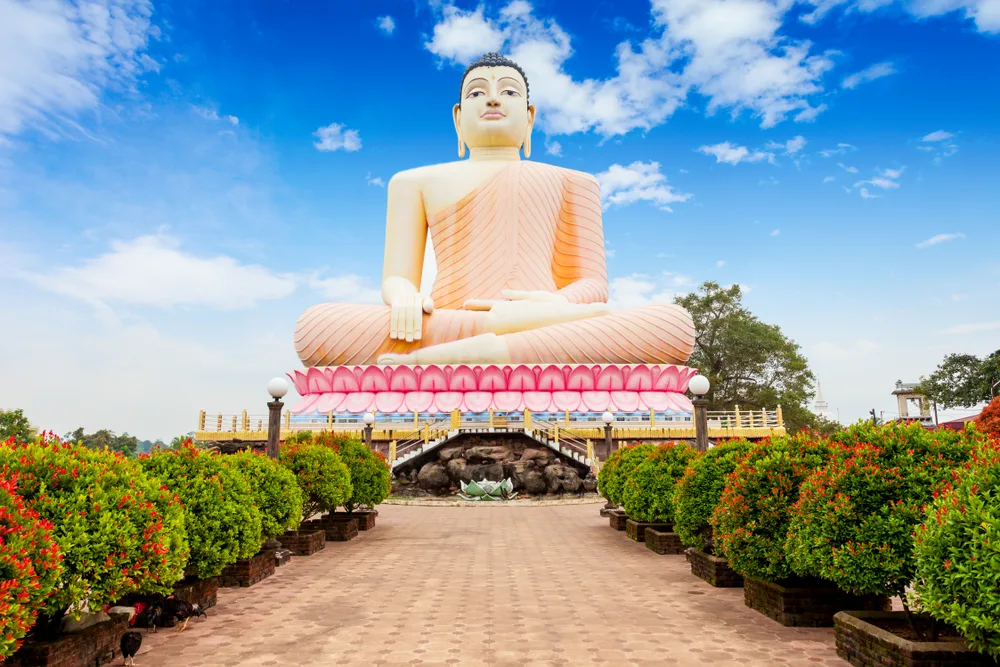
Saiko3p/Shutterstock
The least busy time to visit Sri Lanka is during the months of April and May. This quiet period sees very warm weather across most of the island and a steady increase in rainfall (up to 16 rainy days each month).
If avoiding big crowds is your main goal for a trip to Sri Lanka, you’ll love the laid-back vibe of an April or May visit. You’ll see fewer tourists during this period as people begin to clear out ahead of the coming Yala monsoon season (May to August).
It’s no surprise that fewer people come to Sri Lanka during April and May. The weather isn’t great — not terrible, but nowhere near the island’s most idyllic conditions. With anywhere from 8 to 16 rainy days in each month, you’ll have to plan around the weather:
- April: 70-93°F; 11-16 rainy days
- May: 72-91°F; 8-16 rainy days
But don’t let the higher chances of rain be a deal-breaker for your trip. The prospect of nearly-empty beaches, uncrowded tours and markets, and the ability to take your pick of the best accommodations and flights make April and May one of the best times to visit Sri Lanka.
While it’s definitely rainy in April and May, it’s not the wettest part of the year — that honor belongs to October, November, and December. You’ll also be able to take advantage of lower-than-average prices on flights and accommodations!
Take a look at the data we’ve pulled from Google Hotels to find the average nightly rate in April and May:
- April: $80/night
- May: $68/night
May’s lower average nightly rate, slightly cooler conditions, and the potential for fewer rainy days than April make it a little more popular for adventurous travelers on a budget.
April doesn’t really get wet until mid-month, so you’ll see slightly higher average prices on hotels due to the first 1-2 weeks of nice, dry weather when the month begins.
Making plans for an April or May trip can include visiting the Ceylon Tea Museum outside of Kandy, entering the ancient Dambulla Cave Temple, and going on safari in Yala National Park to see elephants, leopards, crocs, water buffalo, and birds.
As far as events and festivals go, take your pick! Sinhala and Tamil New Year are celebrated with parades and fireworks in mid-April, while May’s Vesak Poya full moon festival means colorful lanterns and lights to celebrate Buddha’s birth.
If price isn’t a huge concern for you, we recommend planning your trip during the first week of April to hit the sweet spot with drier weather, affordable prices, and smaller crowds before the Yala monsoon season officially hits mid-month.
Worst Time to Visit Sri Lanka
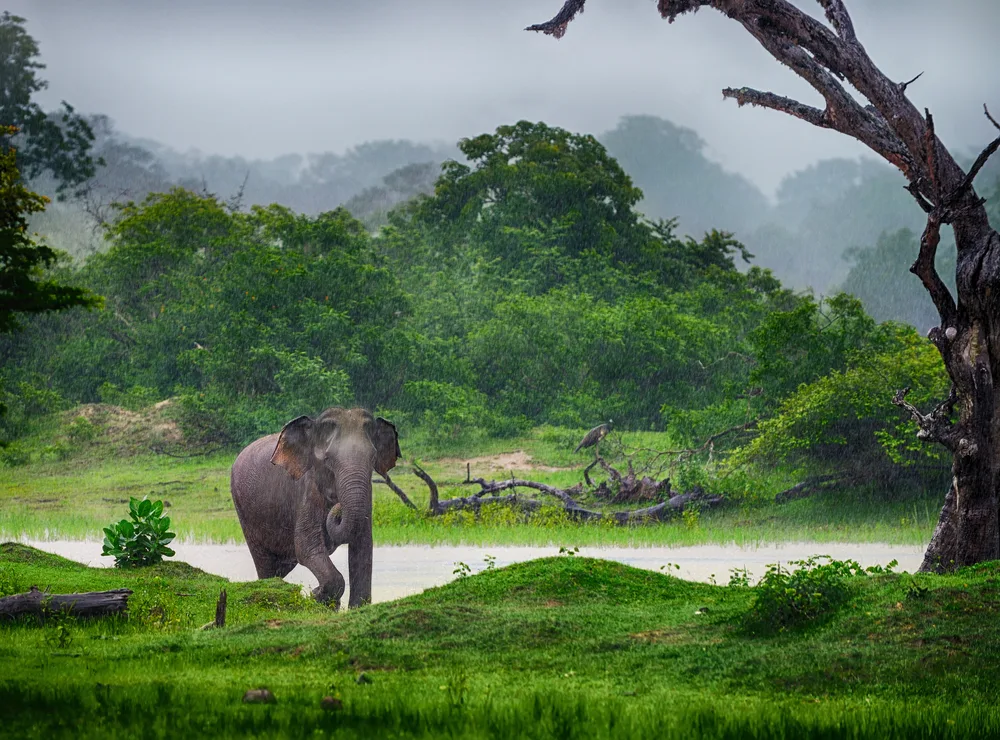
Galushko Sergey/Shutterstock
The worst time to visit Sri Lanka is during the Maha monsoon season, from October to mid-December. Intense rainfall and storms make it harder to enjoy Sri Lanka’s beaches, temples, jungles, and tourist attractions.
Since Sri Lanka experiences two monsoon seasons — the Yala from May to August and the Maha from October through mid-December — and of the two, the Maha monsoon season is the worst.
The Maha monsoon season brings heavy rain, floods, and thunderstorms to the entire island of Sri Lanka. Parts of the island can receive as much as 9″ of rainfall in a month during this season.
- October: 69-89°F; 15-20 rainy days
- November: 67-87°F; 16-19 rainy days
- December: 66-87°F; 12-15 rainy days
While temperatures offer a nice reprieve from the March-September highs in the low 90s, things are still steamy across Sri Lanka from October to mid-December with so much rain and highs that still reach into the upper 80s.
Unlike the Yala monsoon season, the Maha monsoon affects the entire island and rainfall is nearly impossible to escape. Expect daily rain showers or storms during this time, but take comfort in knowing that they are typically short-lived.
October and November are the two wettest months of the year in Sri Lanka with up to 20 rainy days each month, slowly tapering off to around 12-15 rainy days in December. If you can hold off until January, February, or March, you’ll be rewarded with much drier weather and better conditions for exploring the country and sightseeing.
One positive thing about planning a visit during the worst-weather months in Sri Lanka is that you’ll save a little money on accommodations (and possibly on flights, if you fly in December).
We analyzed Google Hotels data for dates in October, November, and December to find the average nightly rates across Sri Lanka:
- October: $81/night
- November: $83/night
- December: $100/night
While it’s a more expensive time to visit than May through July, it’s still cheaper than visiting between January and March. But it’s also a very wet and challenging time to come, with some of the popular parks (like Yala National Park) closing due to flooding.
If you have to visit during this time, we recommend heading to the Temple of the Sacred Tooth Relic in Kandy, touring the Pedro Tea Factory in the south-central region of the island, or visiting the amazing Temple of Sri Kailawasanathan Swami Devasthanam Kovil in Colombo.
You could also check out some of the events happening during these months, like Deepavali (Diwali) celebrations in November that light up the island with oil lamps, fireworks, and gatherings filled with Sri Lankan food and offerings at temples.
Sri Lanka by Month: Climate & Activities
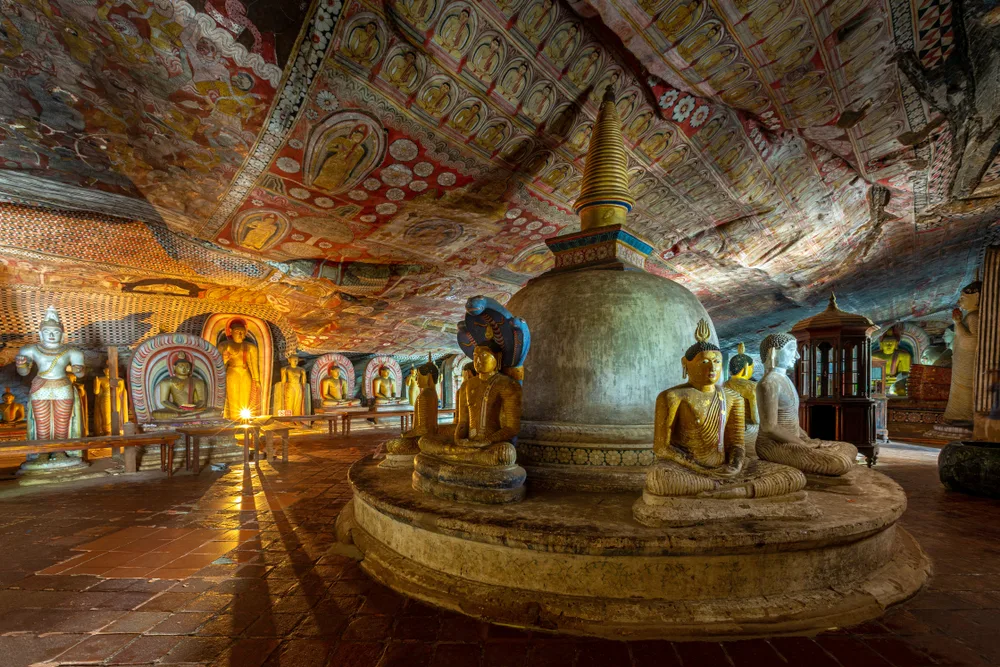
Sean Hsu/Shutterstock
Sometimes, it’s easier to figure out what the best time to visit Sri Lanka will be by looking at the average weather conditions, festivals, and pricing by the month. Here’s what you can expect when visiting Sri Lanka during any month of the year.
January
Sri Lanka is cool, dry, and sunny in January with highs around 88°F and 6-9 rainy days. This is the prime time to visit areas like Kalipiya, Mannar, and Puttalam on the northeast coast and experience festivals like Pongal and Duruthu Poya Day. Expect to pay around $109/night for hotels.
February
Dry February sees 4-6 rainy days and highs around 89°F. Cooler temperatures in Kandy and Batticaloa are great for temple exploration and sightseeing. Go on safari in Yala National Park, celebrate Sri Lanka Day, check out Navam Perahera processions in Colombo, or visit Unawatuna’s beaches. You’ll pay around $118/night for hotels.
March
March sees highs max out around 93°F with 6-10 rainy days as conditions trend toward the Yala monsoon season. It’s a great time to hike the highlands and visit tea plantations, sightsee in Galle, or check out the Maha Shivaratri Day celebrations at a Hindu temple. You’ll pay around $95/night for a hotel in March.
April
Dry weather wraps up around mid-April and highs hover around 93°F. The month sees 11-16 rainy days, so head to the east coast beaches and towns to soak up the sunshine in Arugam Bay, Batticaloa, and Trincomalee. You’ll pay about $80/night on average for a hotel and may find some Sinhalese New Year festivities happening!
May
May brings the Yala monsoon season to Sri Lanka, hitting the south and southwest regions hardest with heavy rain and storms that create 8-16 rainy days. Highs drop to 91°F and hotel rates dip to just $68/night on average. Check out the Buddhist Vesak Poya festival in cities around the island with lanterns and temple visits.
June
As the Yala monsoon rages on, there are 3-13 rainy days in June with highs around 93°F. The east coast is the best place to go during this time for dry weather and cooler temperatures. Hotels are about $70/night on average and you’ll catch the Poson Poya festival during June’s full moon in Anuradhapura.
July
July in Sri Lanka is wet (3-1o rainy days) with great prices on hotels (around $72/night) and highs that can hit 92°F. The northeast, east coast, and Cultural Triangle are ideal to visit in July. Check out the Kataragama Festival and Aadi Vel Festival (both in Colombo) this month.
August
August sees highs around 91°F with 5-10 rainy days. The northeast coastal towns of Jaffna and Mullaitivu are perfect to visit this month when hotels average around $87/night. Check out festivals like the Pada Yatra Pilgrimage, Esala Perahera in Kandy, and Nallur Kandaswamy Kovil Temple Festival.
September
With the Yala monsoon on the way out, conditions are still wet (7-13 rainy days) and highs linger around 91°F. Tea Country in the highlands is great to visit in September, as are towns in the Cultural Triangle like Dambulla, Anuradhapura, and Sigiriya with hotels averaging $80/night.
October
The start of the Maha monsoon season brings heavy rain (15-20 rainy days) and storms to Sri Lanka, especially on the northeastern side of the island. Heading inland to Kandy or Tea Country is a good idea along with beaches on the west coast. You’ll pay around $81/night this month.
November
With 16-19 rainy days, the Maha monsoon hits the northeast hard this month, but brings highs to a manageable 87°F on average. You’ll be able to see Deepavali (Diwali) celebrations with oil lamps and colorful decorations. Hotels cost around $83/night on average in November.
December
Tourist numbers begin to rise in mid-December as rains slack off (12-15 rainy days) and highs remain around 87°F. With more tourists, hotel rates rise to about $100/night, beaches get crowded, and safaris at parks like Udawalawe and Yala National Park get booked up quickly.
Frequently Asked Questions
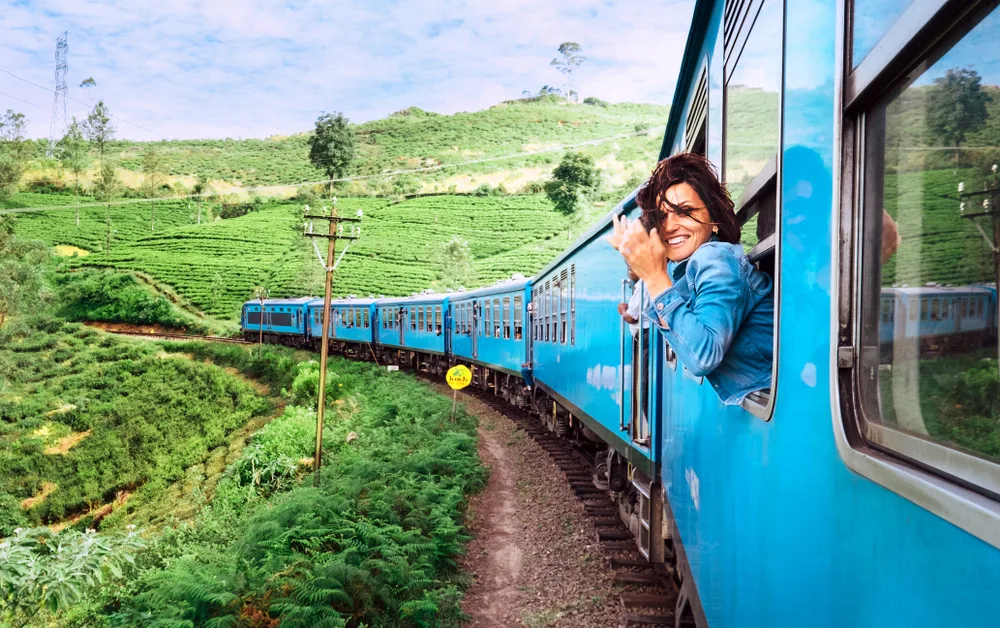
Soloviova Liudmyla/Shutterstock
With your questions about the best time to visit Sri Lanka answered, you might realize that you’re still wondering about a few things — which month is the hottest? Is the country expensive? We’ll take a look at the answers to the most frequently asked questions below.
Which is the best month to visit Sri Lanka?
February is the best month to visit Sri Lanka overall. This month sees the fewest rainy days (4-6) and warm temperatures between 65°F and 89°F. Hotel prices hit their highest point around $118/night, but affordable airfare to Sri Lanka in February makes it one of the cheapest times to fly to the island.
What is the rainy season in Sri Lanka?
There are two rainy seasons in Sri Lanka: The Yala monsoon from May to August and the Maha monsoon from October to mid-December. The Yala rainy season hits the southwest and southern coasts hardest, while the Maha monsoon affects the entire island with up to 20 rainy days each month.
What are the best dates to travel to Sri Lanka?
The best dates to travel to Sri Lanka are between January and March, when the island sees the lowest average rainfall amounts and fewer rainy days overall. Conditions are sunny, warm, and perfect for visiting the beaches, exploring temples and ruins, sightseeing and shopping in cities, and touring local tea plantations.
What is the hottest month in Sri Lanka?
April is the hottest month in Sri Lanka, with most parts of the island seeing lows around 70-80°F and highs reaching 89-93°F. The hottest parts of the island include parts of the Cultural Triangle, like Anuradhapura and Dambulla, in central Sri Lanka. The coolest parts are the coasts and south-central cities in the mountains like Kandy.
Is Sri Lanka expensive to visit?
Sri Lanka is not expensive to visit, but airfare to reach the island can be pricey with tickets in the $850-$1,200 range. Hotels are affordable, costing anywhere from $65 to $120 per night throughout the year, while food and attraction costs can tack an extra $15-$30 onto your daily expenses according to Budget Your Trip.
So, What’s the Best Time to Visit Sri Lanka?
Overall, January through March is the best time to visit Sri Lanka with blissfully dry weather that’s warm, sunny, and perfectly suited for sightseeing, jungle and tea plantation tours, and city exploration.
Visiting between May and July will save you up to $50 per night compared to the hotel rates in January, February, and March, but it’s a very rainy time of year. March and April are the two quietest months for visiting without big crowds.
Try to avoid coming to Sri Lanka between October and mid-December, which marks the Maha monsoon season with heavy downpours and storms that affect the entire island.
With so much to offer travelers, from Buddhist and Hindu temples to thick jungles teeming with wildlife and beaches that look and feel like paradise, Sri Lanka is an incredible destination throughout most of the year. Beat the rain and arrive in time to enjoy the best the island has to offer!



